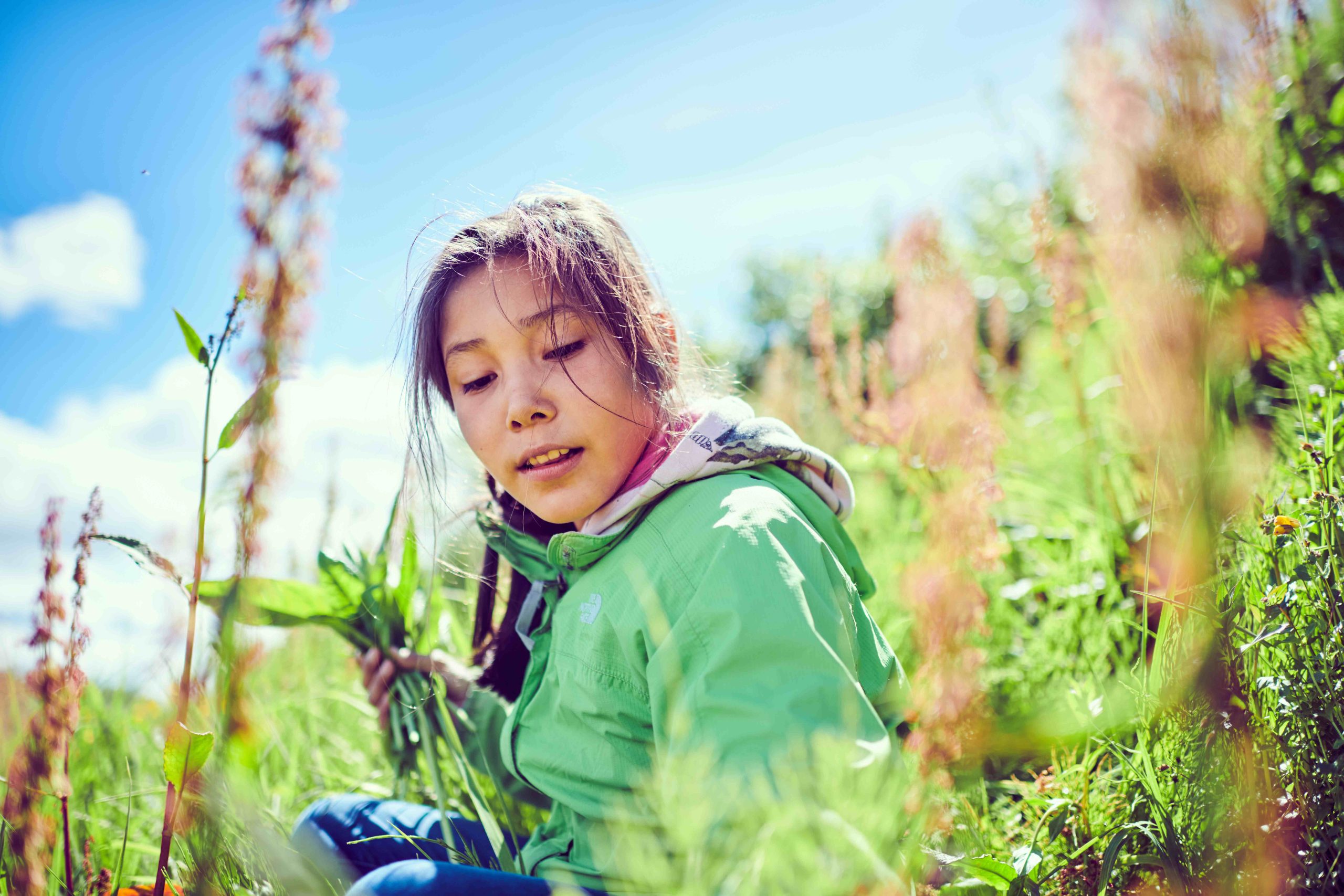Circle of Life
A strong image can speak volumes, conveying layers of vital information without a single word. Our corporate logo, “The Eternal Circle of Life,” communicates BBNC’s cherished stories and deepest values in a thoughtfully designed icon.
Our logo declares that our heart is here in Bristol Bay, where our Native cultures have thrived for 10,000 years. Also embedded in the logo is our mission to enrich our Native way of life—at the heart of which is salmon, our source of sustenance and inspiration.
Salmon Story: Three Stages of Life
As the sparkling salmon of Bristol Bay mature, they leave the blue waters of the sea, their scales turning from silver to red. They make their way upstream to spawn in the pure headwaters where they once hatched, using all their strength and determination to reach their destination. The cycle they complete—and circle they form in our logo—represents perpetuity, wholeness, and inclusion.
Our Corporate Origin Story
Our three corporate colors— blue, silver, and salmon—hold a second meaning. They signify the three ancient cultures of the Bristol Bay region: the Dena’ina, Sugpiaq/Alutiiq, and Yup’ik people who came together thousands of years ago. A long history of cooperation led to the formation of BBNC under the Alaska Native Claims Settlement Act (ANCSA) of 1971. Since then, BBNC has been dedicated to enriching our Native way of life through a three-pronged growth strategy: build a marketable securities portfolio, establish profitable companies, and invest in BBNC shareholders and our region.
Fish First
Visible in our corporate colors, the number three is a theme that runs throughout BBNC’s corporate DNA. And there are three key reasons behind our “Fish First” value. First, salmon are at the heart of our subsistence culture—they always have been and always will be—and for this reason alone, they deserve our protection. Second, the fish are an important element in the economic health of our state as a whole. And finally, Bristol Bay is home to one of the largest wild sockeye salmon fisheries in the world. We have a human and environmental responsibility to protect this resource.

